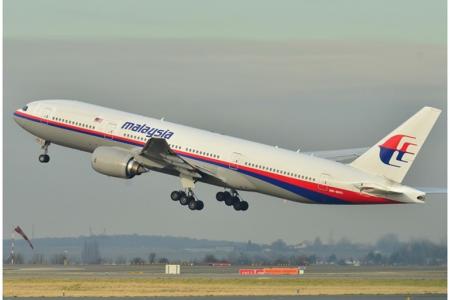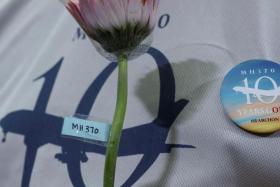MH370 mystery may finally be solved with crash site pinpointed
This could be it, the solution to commercial aviation’s biggest puzzle, that has confounded experts and defeated multinational efforts costing hundreds of millions of dollars.
After seven years of painstaking work using a new technique that combines data from previously unlinked sources, British engineer Richard Godfrey says he knows exactly where the wreckage of MH370 lies.
His calculations place it in the southern Indian Ocean, about 2,000km west of Perth, British and Australian media reports said.
The Malaysian Airlines Boeing 777 disappeared on a flight from Kuala Lumpur to Beijing on March 8, 2014, with 239 people on board.
By accident or design it ended up where a wide-body jetliner can still lie hidden for so long, 4km below the surface of the vast remote stretch of ocean between Australia and southern Africa.
Some 120,000 sq km of the area (nearly 165 times the size of Singapore) has been searched, but till now, it was too much of a hit-or-miss effort. It’s not looking for a needle in a haystack, Mr Godfrey said. It’s more like “looking for something microscopic in a haystack”.
Now he has narrowed it down to a circle with a radius of a little over 70km. "The wreckage could be behind a cliff or in a canyon on the ocean floor," the BBC quoted him as saying. "And you need maybe three or four passes before you start to pick things up."
Many experts believe that this is the closest anyone has come to finding the plane, and it remains an issue of organising another search.
Sky News reported in Australia that Mr Godfrey was in contact with several organisations that are interested and an agreement was being sought with the Malaysian authorities.
Mr Godfrey used something called the weak signal propagation report (WSPR) network, a global database of radio waves that are affected like a tripwire when an aircraft crosses them.
To zero in on the crash site, the WSPR data was put together with what was known of satellites pinging the plane, information from its manufacturer Boeing, and oceanographic studies of how floating debris drifts.
More than 30 pieces of aircraft debris have been found on the African coast and islands in the Indian Ocean, and at least three have been identified as being from MH370.
Earlier media reports have indicated that whoever was flying the plane laid false trails, with multiple changes in direction, altitude and speed.
It seems clear that there was a deliberate attempt to evade detection, and Mr Godfrey reportedly believes the man in charge of the aircraft, Captain Zaharie Ahmad Shah, 53, was responsible. But how exactly the pilot could carry out such a plan with more than 200 others on board - and why - remains harder to explain.
A similar route was found on a flight simulator in the pilot’s home in Malaysia, and while this does not prove his involvement, Mr Godfrey said “it’s a bit of a smoking gun”.
The engineer, with a background in building automatic landing and autopilot systems for aircraft, is a founding member of the so-called MH370 Independent Group.
In 2009, Mr Godfrey, who was in Brazil for work, could not take an Air France flight from Rio de Janeiro to Paris as he was scheduled to. The Airbus 330 crashed in the Atlantic Ocean, killing all 228 people on board.
Get The New Paper on your phone with the free TNP app. Download from the Apple App Store or Google Play Store now



